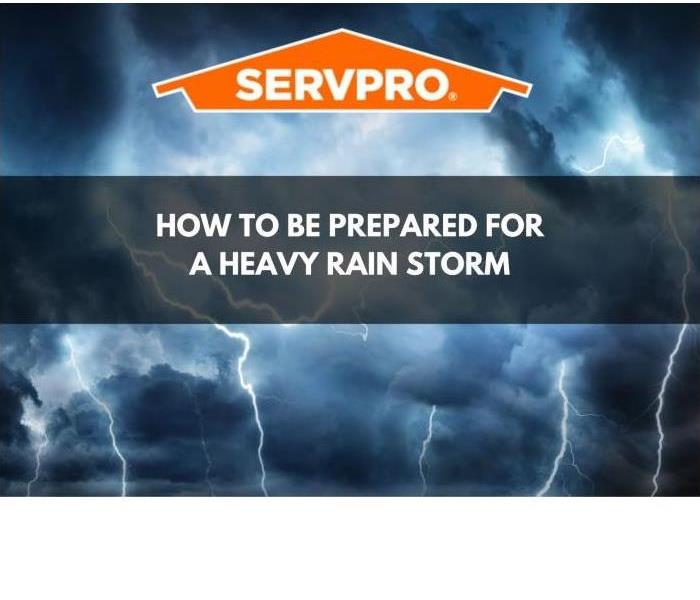Heavy Rains: How to protect your home for water damage
8/2/2024 (Permalink)
As we move into seasons marked by heavy rains, homeowners must be vigilant about protecting their properties from potential water damage. Prolonged and intense rainfall can lead to flooding, leaks, and structural issues that can be costly and time-consuming to repair. However, with a few proactive steps, you can safeguard your home and minimize the risk of water damage. Here’s how:
1. Inspect and Maintain Gutters and Downspouts
Your gutters and downspouts are your first line of defense against water damage. They help channel rainwater away from your home's foundation. Ensure that they are free from debris like leaves and twigs, which can cause blockages. Regularly check for any signs of rust, cracks, or disconnections. Extend downspouts at least 4 to 6 feet away from the foundation to prevent water from pooling near your home.
2. Seal Windows, Doors, and Cracks
Windows and doors are common entry points for water during heavy rains. Check the seals around them and reapply caulking if needed. Also, inspect the exterior of your home for any cracks or gaps in the walls or foundation. Sealing these with appropriate materials will prevent water from seeping in and causing damage.
3. Landscaping Considerations
The landscaping around your home plays a significant role in water management. Ensure that the ground slopes away from your house, allowing water to flow away from the foundation. Avoid planting shrubs and trees too close to your home, as their roots can interfere with drainage systems and even damage the foundation.
4. Check to verify your Sump Pump is functioning correctly
For homes with basements, a sump pump is an essential investment. This device helps remove water that accumulates in the basement, preventing flooding and water damage. Make sure your sump pump is in good working condition and consider installing a battery backup system in case of power outages during storms.
5. Backflow Prevention
Heavy rains can overwhelm municipal sewer systems, leading to sewage backups in homes. To prevent this, consider installing a backflow valve in your sewer line. This device allows sewage to flow out of your home but prevents it from flowing back in.
6. Insurance Coverage
Finally, review your homeowner’s insurance policy to ensure you have adequate coverage for water damage. Standard policies often do not cover flooding, so you may need to purchase additional flood insurance, especially if you live in a flood-prone area.
Heavy rains can pose a significant threat to your home, but with careful preparation and regular maintenance, you can minimize the risks. Taking these proactive steps not only protects your property but also provides peace of mind during stormy weather. Remember, the key to protecting your home from water damage is vigilance and timely action. Stay safe and dry!
If you're experiencing water intrusion or flooding in your property, don't wait for the damage to worsen. Call SERVPRO of Northern Summit County 330-650-4486 immediately for professional assistance. Our team is ready to help you protect your home and restore peace of mind. Contact us today for a prompt response and expert service 24/7/365.






 24/7 Emergency Service
24/7 Emergency Service
